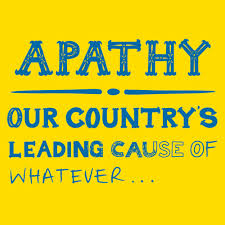2016 is local government election time in New Zealand, with a range of organisations required to elect councils and governing authorities at that time. Voting is done by postal ballot, where voting papers are posted to registered voters to be completed and returned by election day.
Voter turnout for local government elections has been declining for some years. In many parts of the country less than half of registered voters participate.
An interesting comparison is with voter turnout for New Zealand general elections. These are still conducted at polling booths, where registered voters must physically present themselves to cast their votes. These elections still poll quite highly – 77% at the 2014 election, in spite of inclement weather on election day in many areas. This number is less for the under 35s and higher for the over 50s. Indeed nearly 90% of those aged 65-69 cast a vote.
If ease of voting is seen as an issue affecting voter turnout for local government elections, why isn’t this an issue for general elections? In terms of voting ease, postal voting should be easier than having to physically turn up to vote at a polling booth on election day, and local government elections should have at least the same levels of participation as general elections.
This isn’t the case, so voter turnout isn’t related to voting convenience.
Will making voting even easier by allowing registered voters to do this on their electronic devices increase participation? Perhaps at the first election where the new system has some novelty value. But that’s probably only likely to be what investment bankers refer to as a “dead cat bounce”. Online voting is no magic bullet that will solve the problem of declining voter participation.
The ease of voting shouldn’t be confused with the complexity of voting. Local government elections are complex. Voters are asked to cast their votes for candidates seeking election to a number of bodies: regional council local representatives; city or district council mayors and local councillors; community board members; liquor licensing authority members; district health board directors; as well as the occasional referendum.
So as well as having to elect candidates, many of whom will be unknown to them, local authority voters have to deal with two voting systems – First Past the Post (FPP) and Single Transferable Vote (STV). All of the district health boards and seven local authorities used the STV system in 2013. This meant that most electors had to contend with two different voting systems. This confusion leads to significant numbers of informal votes being cast – about 5% in the 2013 local government elections.
Low voter turnout isn’t simply an issue of elector convenience. It’s about voters being motivated to vote. The question in their mind is “What’s in it for me?”
The real challenge is to increase elector understanding of the importance of participating in democratic processes, and increasing their interest in learning about and selecting potential candidates, as well as making it much easier for them to unravel the plethora of forms they are required to complete. Too many registered voters give up on this process almost before they start because they struggle to see any benefit to them for the time that’s needed to participate. This won’t change by adding another way to vote.
Voter turnout for local government elections has been declining for some years. In many parts of the country less than half of registered voters participate.
An interesting comparison is with voter turnout for New Zealand general elections. These are still conducted at polling booths, where registered voters must physically present themselves to cast their votes. These elections still poll quite highly – 77% at the 2014 election, in spite of inclement weather on election day in many areas. This number is less for the under 35s and higher for the over 50s. Indeed nearly 90% of those aged 65-69 cast a vote.
If ease of voting is seen as an issue affecting voter turnout for local government elections, why isn’t this an issue for general elections? In terms of voting ease, postal voting should be easier than having to physically turn up to vote at a polling booth on election day, and local government elections should have at least the same levels of participation as general elections.
This isn’t the case, so voter turnout isn’t related to voting convenience.
Will making voting even easier by allowing registered voters to do this on their electronic devices increase participation? Perhaps at the first election where the new system has some novelty value. But that’s probably only likely to be what investment bankers refer to as a “dead cat bounce”. Online voting is no magic bullet that will solve the problem of declining voter participation.
The ease of voting shouldn’t be confused with the complexity of voting. Local government elections are complex. Voters are asked to cast their votes for candidates seeking election to a number of bodies: regional council local representatives; city or district council mayors and local councillors; community board members; liquor licensing authority members; district health board directors; as well as the occasional referendum.
So as well as having to elect candidates, many of whom will be unknown to them, local authority voters have to deal with two voting systems – First Past the Post (FPP) and Single Transferable Vote (STV). All of the district health boards and seven local authorities used the STV system in 2013. This meant that most electors had to contend with two different voting systems. This confusion leads to significant numbers of informal votes being cast – about 5% in the 2013 local government elections.
Low voter turnout isn’t simply an issue of elector convenience. It’s about voters being motivated to vote. The question in their mind is “What’s in it for me?”
The real challenge is to increase elector understanding of the importance of participating in democratic processes, and increasing their interest in learning about and selecting potential candidates, as well as making it much easier for them to unravel the plethora of forms they are required to complete. Too many registered voters give up on this process almost before they start because they struggle to see any benefit to them for the time that’s needed to participate. This won’t change by adding another way to vote.


 RSS Feed
RSS Feed
